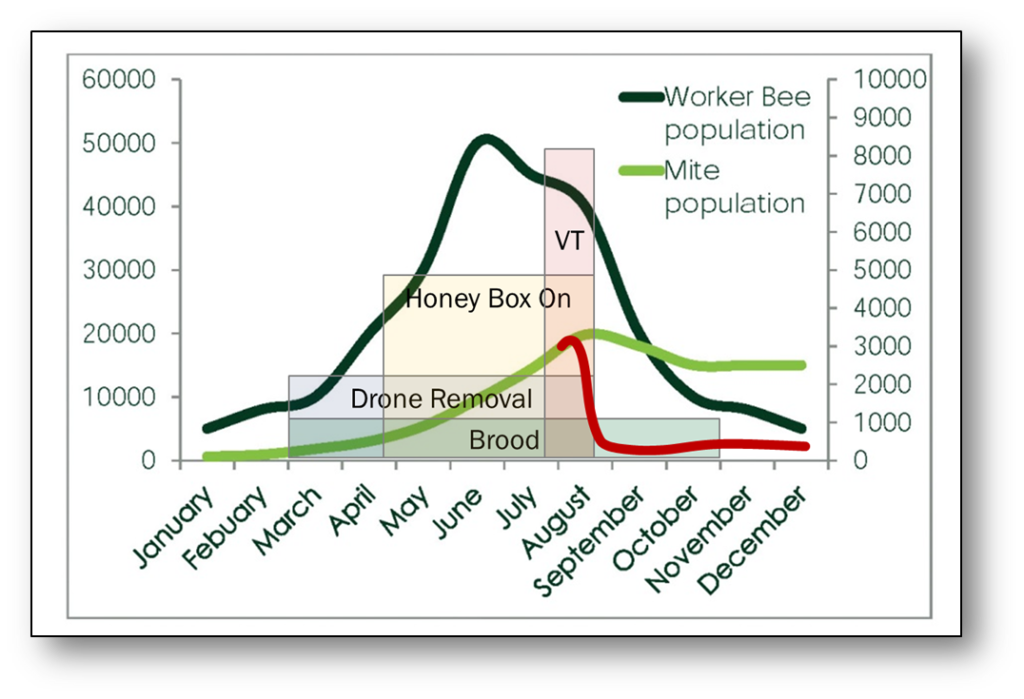The Varroa Trap Method (2) is one of the oldest known biotechnical varroa treatments and also the most effective. Studies and practical experiences show a reduction of Varroa levels around 90%. It combines the concepts of the complete brood removal technique (extraction of reproducing mites) with that of a brood break.

The queen is separated for 27 days in a frame cage, where she can only lay eggs on a comb within the cage, whereby empty dark combs work best. Also ensure there is a hole or passage with which the queen can access both sides of the comb.
Every 9 days the trap comb will be exchanged for an empty comb and placed next to the frame cage for another 9 days where the worker bees will cap the brood cells. Each time the queen will be transferred back into the cage and after 27 days there should be no brood in the hive outside the cage.

On day 18 of each cycle, the trap comb beside the frame cage will be removed from the hive and frozen for at least 2 days to kill the varroa. This procedure is repeated 3 times and towards the end, the mites can only reproduce in trap combs inside the frame cage. Weekend beekeepers can also apply a cycle of 4 times every 7 days to a total of 28 days.
Timing
The mite population is maximum in August, whereas the bee population declines since June. The start and end level of the bee population is the same, but the mite population level is much higher at the end of the year than at the start of the year. Untreated, the colony would be overwhelmed by mites within a few years.

Chemical treatment options are limited by the presence of brood (March to October) and the presence of honey boxes (May to August). Most do not affect the Varroa mites in closed cells and most are not recommended when honey boxes are present.
However, the Drone Brood Removal Method (1) can be applied from March until the end of the season in August as long as the bees are inclined to breed drones.
For best results the Varroa Trap Method (2) is recommended 2 to 3 weeks before the honey harvest, in our area in the second half of August. This overlaps with the peak of the mite population. After the final release of the queen, the bees will breed the generation of winter bees (September) and process and store the winter food (from syrup).
In order to plan the treatment schedule, here is an Excel sheet for download that will adjust the dates and weekdays according to the day of intended honey extraction.

The frame cage for the Varroa Trap Method (2) can be self-made from queen excluder material and standard wood molding available in building supply stores. The complete worksheet in PDF format is available here.
Commercial frame cages made from metal are available in bee supply stores in the US (google: deep frame isolation cage or medium frame isolation cage). Unfortunately a Canadian source could not be found yet.
The CVBC flyer in PFD format for the Varroa Trap Method (2) can be downloaded here.